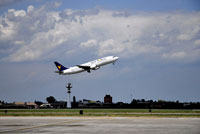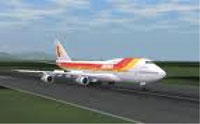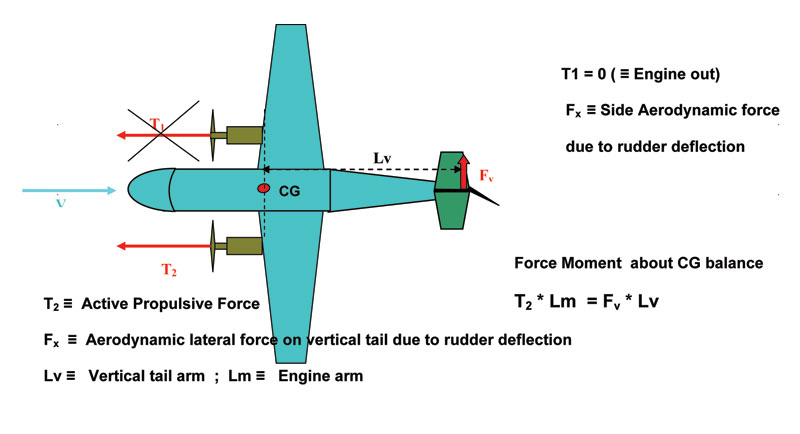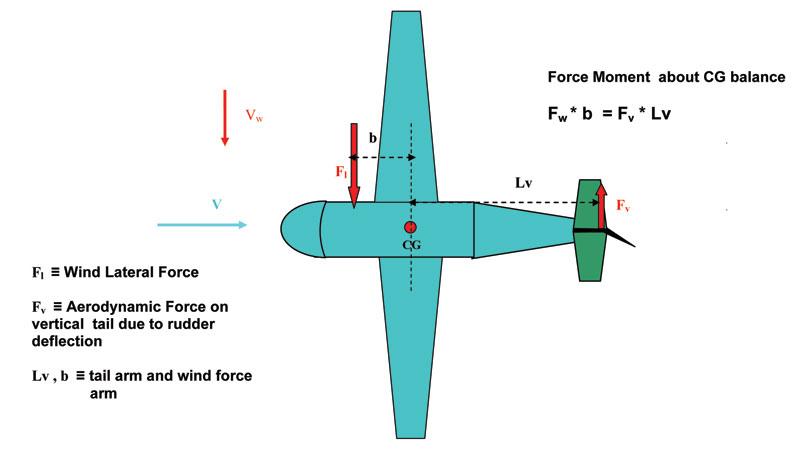5. Critical situations in take off or landing flight phase


In Take Off or Landing Phases to maintaining the axis runway is mandatory !!!
5.1 One engine out control
A critical situation during the take off phase or a landing phase could be an engine out condition. In this case, the operative engine will create a force moment that has to be balanced by a side aerodynamic force created by the rudder deflection.

Critical situation during the take-off
5.2 Wind side control

5.3 Carshworthiness
In a normal airplane landing the vertical speed towards the ground is about 2 ? 4 m/s. If the vertical speed is between 6 m/s and 8 m/s, we speak of hard landing, and the problem just a matter of a control maintenance of the landing gear. If the landing vertical speed is higher than 8m/s, we speak of a crash problem: the fuselage could structurally fail and fatalities or severe injuries can occur.
This situation can happen because pilot error in landing procedures (vertical speed too high or not the correct position of the plane with rapport to the ground), special meteorological phenomena, as turbulence (vertical speed towards the ground) or wind shear (wind velocities parallel to the ground, that decrease suddenly the relative on the speed of the airplane wind reference to the air).
So far no certifications requirements are requested on the whole airplane; requirements do exist just on seats. However some research are going on to improve the passive safety of the aircraft, both in material and structures either in experimental and numerical methods.









